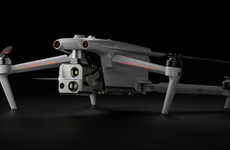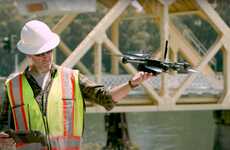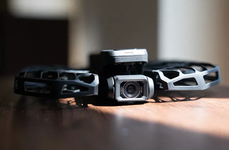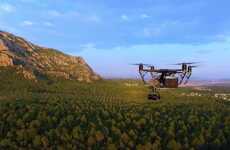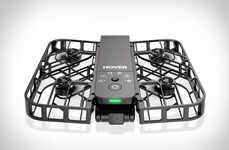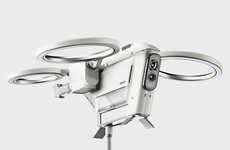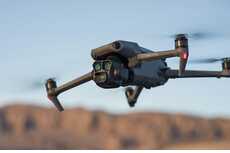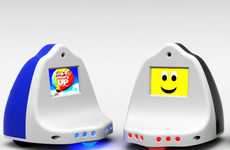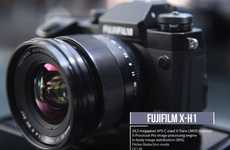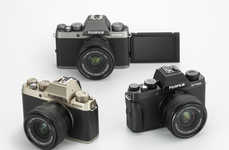
The Mark Drone is the First VIO Positioning Drone
Justin Lam — June 1, 2018 — Tech
References: markdrone.net & kickstarter
The drone market is full of options for budding enthusiasts but the Mark drone may capture more attention as it's the first VIO positioning drone. Visual Inertial Odometry, or VIO, is a new technology in drone control that aims to replace traditional vision sensors and GPS with a 45-degree camera and deep learning technology. The use of this technology in the Mark drone allows it to achieve true autonomous flying, as the drone can identify itself based on its position relative to other surroundings.
In addition to being the first VIO positioning drone, the Mark also carries a host of other technological features. A built-in memory cruise can be operated by hand or via a mobile phone app, allowing users to map an exact return path for the drone. The drone is also capable of pre-programmed dramatic shots, all of which can be controlled via the Mark drone app.
In addition to being the first VIO positioning drone, the Mark also carries a host of other technological features. A built-in memory cruise can be operated by hand or via a mobile phone app, allowing users to map an exact return path for the drone. The drone is also capable of pre-programmed dramatic shots, all of which can be controlled via the Mark drone app.
Trend Themes
1. VIO Positioning - The use of Visual Inertial Odometry (VIO) technology in drones presents disruptive innovation opportunities for autonomous flying and accurate positioning without traditional sensors.
2. Deep Learning Drones - The integration of deep learning technology in drones opens up possibilities for advanced autonomous capabilities and intelligent decision-making.
3. Mobile App Control - The development of mobile apps for drone control offers convenience and advanced features for users, such as pre-programmed shots and mapping return paths.
Industry Implications
1. Drone Manufacturing - Drone manufacturers can explore the integration of VIO technology and deep learning algorithms to create next-generation drones with improved autonomy and accurate positioning.
2. Software Development - Software developers can capitalize on the demand for mobile apps that provide advanced control features and capabilities for drones.
3. Photography and Videography - Photography and videography professionals can leverage deep learning drones with pre-programmed shots to capture unique and captivating aerial shots.
1.9
Score
Popularity
Activity
Freshness


